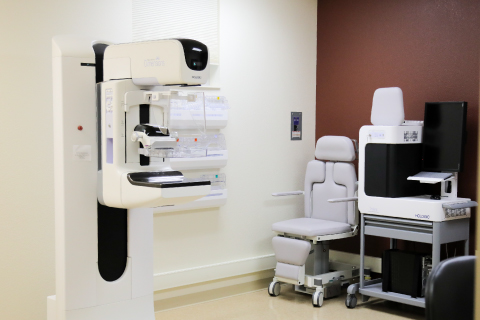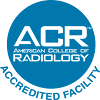 Screening High Risk Patients
Screening High Risk Patients
The American Cancer Society has determined that breast MRI is a very useful exam and should be used regularly in certain patient groups. Their guidelines were published in the ACS journal CA:A cancer Journal for Clinicians in 2007.
Annual Breast MRI Screening is recommended in addition to mammograms for women who meet at least one of the following criteria:
- BRCA mutation
- First-degree relative of a BRCA carrier, even if patient is untested
- Lifetime risk of breast cancer is 20-25% or greater, as defined by the BRCAPRO*
- Radiation to chest between age 10-30 years of age
- Li-Fraumeni syndrome, or a first-degree relative
- Cowden syndrome, or a first-degree relative
- Bannayan-Riley-Ruvalcaba syndrome, or a first-degree relative
Even though some women have conditions that give them a higher-than-average risk of breast cancer, there isn’t enough evidence to recommend for or against Annual Breast MRI Screening for women with the following conditions:
- Lifetime risk of 15-20%, as defined by BRCAPRO*
- lobular carcinoma insitu or atypical lobular hyperplasia
- atypical ductal hyperplasia
- heterogeneously or extremely dense breasts on mammography
- personal history of breast cancer, including ductal carcinoma in situ
Screening Breast MRI is not recommended for women who have a lifetime risk of breast cancer below 15%.
*BRCAPRO is a statistical model to determine a women’s probability for developing breast cancer. The model has software to determine calculations.
Women with a first-degree relative diagnosed with premenopausal breast cancer have approximately double the risk of developing breast cancer and should have a regular Breast MRI exam. This could be every one to two years depending on other clinical and risk factors. In high risk populations, mammography sensitivity drops to less than 50%, whereas Breast MRI sensitivity stays above 80%.
Evaluating Known Malignancy
Breast MRI is excellent for staging a biopsy proven malignancy in heterogeneously or extremely dense breasts, for determining any chest wall invasion for deep lesions, and for screening the contralateral breast. (see information below)
MRI of the Contralateral breast
Cancer is found in the contralateral breast in 3-8% of women who have received treatment for unilateral breast cancer. An extensive study done by the American College of Radiology Imaging Network and funded by the National Cancer Institute evaluated 1007 women with unilateral breast cancer. All women received a bilateral breast MRI.
The results showed that women with breast cancer, at the time of initial diagnosis, had a cancer in the opposite breast 3.1% of the time. This number increases during the first 2 years after the initial diagnosis.
Cancer in Axillary Nodes
When an axillary node biopsy comes back malignant and the mammogram, ultrasound, and clinical exam are negative; Breast MRI is the procedure of choice.
Breast Implants
Breast MRI is the exam of choice to evaluate for implant problems. However, breast implant patients should have regular annual mammograms to screen for breast cancer.
Trouble Shooting
Patients should have a conventional work up when there are breast symptoms; including a mammogram, clinical breast exam, and ultrasound. If all exams are negative and a blind biopsy is not possible or negative, the patient may benefit from a Breast MRI.
When ordering, please write referral for bilateral breast, even for patients who have had a mastectomy. The breast coil is engineered to accommodate both breasts. The chest wall and axillary tissues will still be imaged on patients who have had a breast removed.
Most patients having a breast MRI will receive an injection of a gadolinium based contrast agent during their examination. Gadolinium is well tolerated by nearly all patients, but not indicated for patients with compromised kidney function.
Contraindications for MRI procedures:
- Cardiac pacemaker
- Cerebral aneurysm clips
- Cochlear Implants
All patients will be screened for MRI safety.



